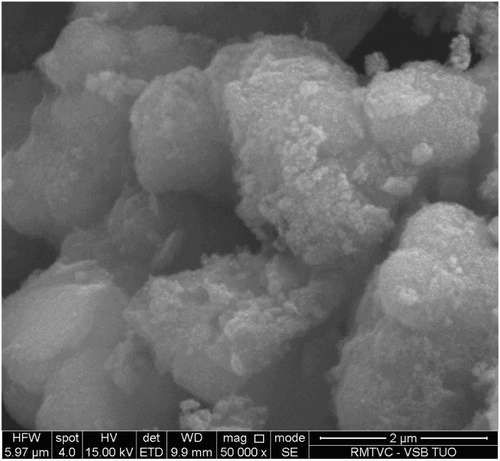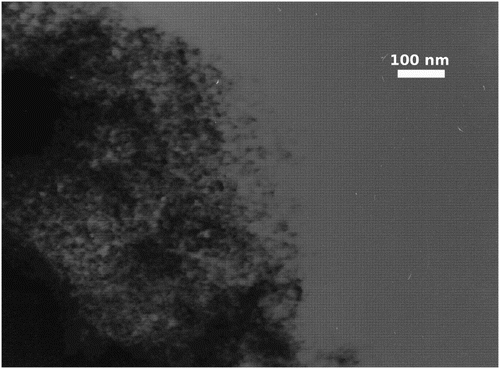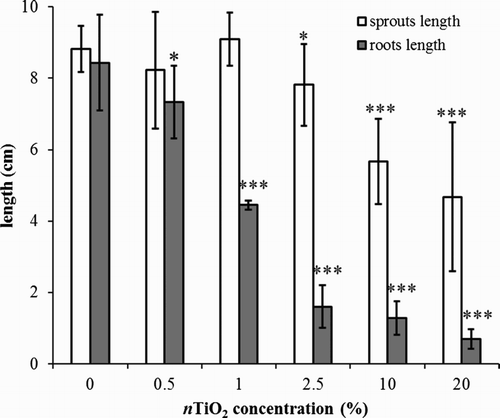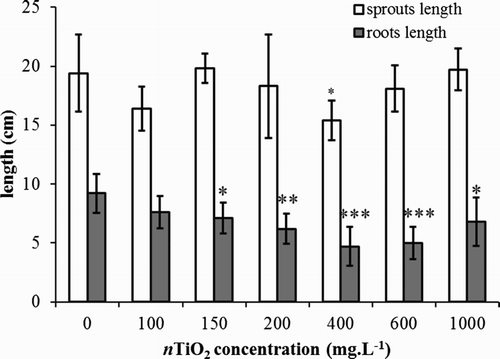Figures & data
Figure 2. SEM image of anatase-type TiO2 nanopowder: TiO2 particles form aggregates varying in size from several nanometers up to 50 µm.

Figure 3. TEM image of anatase-type TiO2: particle size ranges from 5 to 25 nm with a mean size of 5–10 nm. There is no evidence that nTiO2 have a dominant habit; individual grains have a tendency to form a spherical shape.

Figure 4. Average length of roots and shoots of barley (Hordeum vulgare L.) after six-day cultivation on agar medium (type I) under different nTiO2 concentrations (%). The lengths of both roots and shoots diminish with rising nTiO2 concentration. A significant change was observed at concentrations higher than 0.5% and 2.5% for roots and shoots, respectively. The error bars represent standard deviation from seven measurements (* statistically significant difference from control on significance level α = 0.05, ** statistically significant difference from control on significance level α = 0.01, *** statistically significant difference from control on significance level α = 0.001).

Table 1. Content of chlorophyll a and b, total and a:b ratio of leaf sections from the top of the first and second leaves of barley (Hordeum vulgare L.) after cultivation in agar medium (type I) or in hydroponics (type II).
Table 2. The dry weight of shoot biomass of barley (Hordeum vulgare L.) after cultivation in (a) agar medium (type I) or in (b) hydroponics (type II).
Figure 5. Average lengths of roots and shoots of barley (Hordeum vulgare L.) after seven-day cultivation in hydroponics (type II) under different nTiO2 concentrations (mg L−1). Only root length is affected when concentration of nTiO2 is above 150 mg L−1. The error bars represent standard deviation from seven measurements (* statistically significant difference from control on significance level α = 0.05, ** statistically significant difference from control on significance level α = 0.01, *** statistically significant difference from control on significance level α = 0.001).


